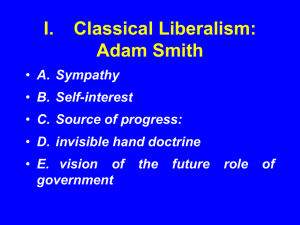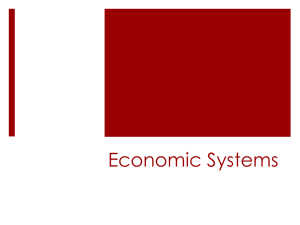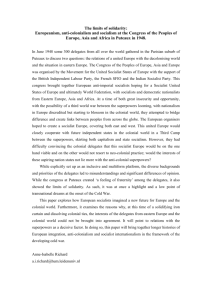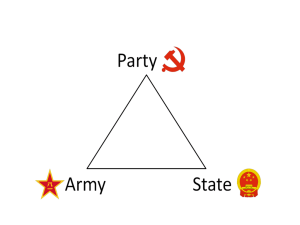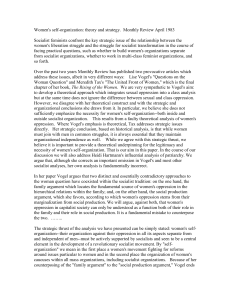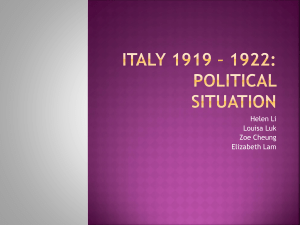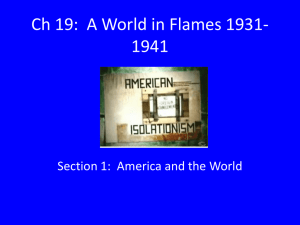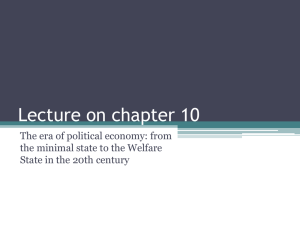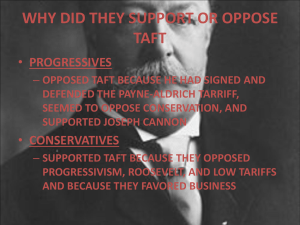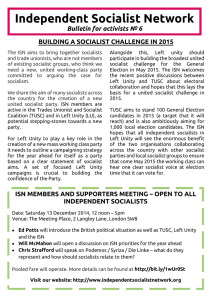Socialism
advertisement
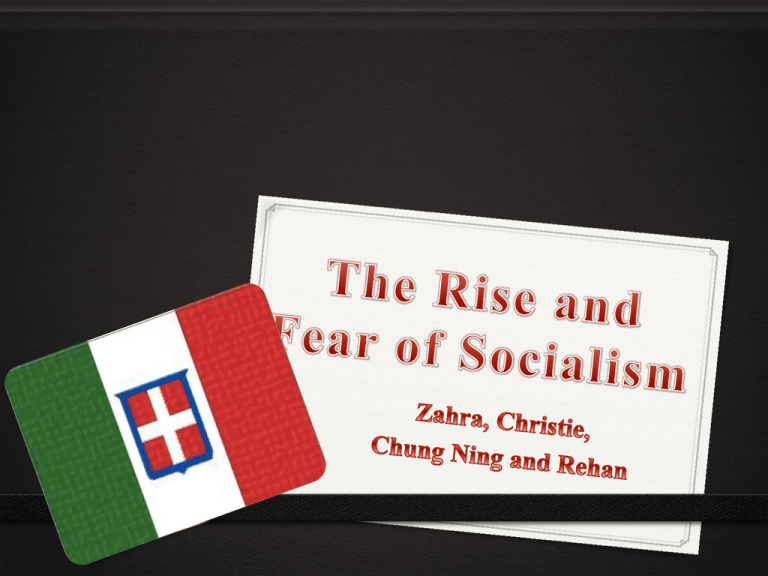
0 The Russian Revolution inspired many socialists in Italy in which political and economical infrastructures were unstable. The had government had proved to be incapable of providing for the people in a free-market economy in which they had limited control. 0 The Liberal regime was under attack from the Left as well as the Right as it was feeble. 0 Workers were determined to improve their position, and so launched a series of strikes, whilst returning peasant soldiers seized unoccupied land. 0 Socialists made major gains in local and national elections. The government made concessions, but this upset those on the Right, without stemming the unrest. 0 In Italy, the socialist party had pronounced themselves to be a Marxist Party, aiming for a Socialist Republic. They spoke of the eventual withering away of the state, after a period of dictatorship of the proletariat. 0 There would be workers’ control of industry, and the nationalisation of all lands. Religion would no longer be needed. The party officials were deeply split between Maximalists and the Minimalists. 0 Maximalists, who controlled the party organization, urged revolution to enact their full program. 0 0 Minimalists, who dominated the parliamentary party, were more prepared to use Parliament to enact reforms on the way to full Socialism. In Jan 1921 the PSI split into three. 0 An even more radical group, prepared to join the Communist Internation on Lenin’s term, broke away from the Maximalists to form the Communist Party, PCI. 0 Socialist support was challenged by rival Catholic unions, organised in the CIL (Italian Cofederation of Workers) 0 The PSI controlled many local councils, but these failed to cooperate. The three main wings of the Socialist movement were all internally divided, and failed to work together. 0 The Italian Socialist Party (Partito Socialista Italiano, PSI) Socialization of all land 0 Manufacturers, landlords, professional men, shopkeepers and tradesmen felt under attack from the Municipal ‘Dictatorships of the Proletariat” 0 ‘Dictatorships of the Proletariat” refers to a socialist state in which the proletariat, the industrial working class, have control of political power. 0 No private property can be used for oppression and exploitation 0 Industrial property used to produce society's goods cannot be privately owned. The socialization of all land meant that Socialists lacked the support of the landowners Violence 0 Socialist agricultural unions not only controlled the wages and hours but also the supply of labour and employment 0 Challenged the owners’ property rights and right to manage 0 Aimed to gain monopoly control over the labour supply, forcing employers to employ their workers, even during winter months 0 Believed in violence; Prepared to use violence against any employer using blackleg labour (as Socialists often went on strikes) Growing fear of Socialism attracted people to Fascism Mussolini exploited this situation, attacked Socialists 0 A period of general fear of communism 0 As the government became increasingly unpopular, many Italians turned to support the Socialist Party and the Catholic Popular Party in the elections of 1919. 0 The Socialist Party won more than one-third of all votes and became the largest single party in the Chamber of Deputies. 0 They were followed at a distance by the Popular Party which won one-fifth of all votes on a platform of social reform. The ruling parties (the Liberals and Democrats) lost heavily. 0 Encouraged by the success of the general election, the Socialists were prepared to make more strikes. Socialist agitation reached its climax in September 1920 0 Although the Socialists had established their control over a number of towns in the North, they failed to seize power in Italy. There were two reasons which might explain their failure to seize power: 0 1) The leaders of the General Confederation of Labour were chiefly interested in the improvement of workers' livelihood. When the Italian government promised a 20% wage increase to the workers, the Confederation was satisfied and decided to call off the strike. 0 2) The Socialists lacked the support of the peasants because they proclaimed socialization of all land. Early in 1921 the Socialist threat was over. The Socialist Party also split into several factions. About one-third of the members withdrew to form a Communist Party. 0 The 'Red Menace' alarmed the industrialists, landlords and other property holders, while many Italians were discontented with the government which drove D'Annunzio from Fiume. 0 The fear of revolution and the desire for national glory were manipulated to the advantage of a new political group, the Fascists, led by Benito Mussolini. 0 In March 1919, he formed the Milan fascio It only had vague ideas about radical reforms. 0 For propaganda purpose, Mussolini advocated universal suffrage, the abolition of the Senate, land for the peasants, improvement of workers' conditions and a strong foreign policy. The property class did not like his radical party programme The economic factor and how the Socialist Party received support 0 The second event (first being the invasion of Fuime which had gained much support of the public but was frowned upon by the international community) was that during 1919-1920, governments in Italy changed rapidly and yet all of them failed to find effective solutions to the most urgent problems of the day—the problems of economic inflation and social unrest. 0 The third event was that after the General Strike in 1920, as stated earlier, the property class became haunted by the spectre of a Communist revolution and wanted a strong government to restore law and order in the country. 0 With some support from the property class, Mussolini formed the National Fascist Party in 1921. In the elections of May 1921, Fascists were able to gain 35 seats out of 355 - a tremendous gain. 0 In 1920 the PSI, the Italian Socialist Party, won elections to many town councils and so controlled local taxes and services. It claimed over 200,000 members and its paper Avanti! was read by over 300,000. 0 Italy was swept by a wave of strikes. Many politicians and members of the elite thought that the country was close to a Socialist revolution during the Biennio Rosso of 1919-20.

